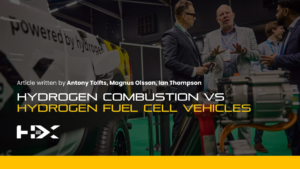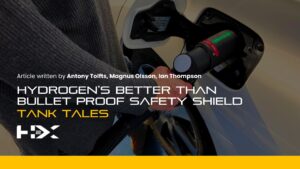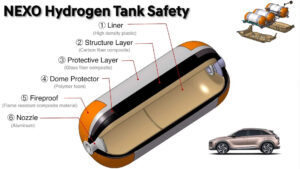H2X Global Announces Strategic Leadership Transition
H2X Global is announcing that Brendan Scott Norman has decided to resign from his position on the Board of Directors. While this was a difficult decision, it comes at a pivotal moment as the company restructures ahead of an anticipated IPO on a global exchange. Brendan will remain a major shareholder and a committed supporter of H2X, continuing to champion the company’s vision and mission.
Brendan expressed his sentiments about the decision:
“The decision to move on was difficult, but it was the right time as the company restructures ahead of an expected IPO on a global exchange. In moving on from H2X, I am happy much important work has already been completed in setting up the business and getting it moving. I would like to thank the Board and shareholders for their continued support.”
James Walker, Chair of H2X Global, commented:
“We understand and respect Brendan’s decision to resign. On behalf of the Board, we sincerely wish him all the best for the future.”
Brendan has already commenced his handover, ensuring a smooth transition. Antony Tolfts, H2X CEO, will cover Brendan’s Board position on an interim basis until the right board member can be appointed ahead of the IPO.
Brendan Norman’s legacy at H2X includes significant contributions to the company’s strategic direction and development. His automotive background, with experience at BMW, VW, and Audi in Australia and Asia, has been invaluable.
Reflecting on his journey, Brendan shared:
” I started with BMW in Australia and then moved into Asia with BMW, Audi, and Volkswagen. I was working in Asia for a long time, including Japan, Korea, Southeast Asia, Singapore, China, and later Europe. My experience with hydrogen vehicles goes back to 2008, working as an advisor and setting up another hydrogen company. The development group I’ve been part of has put several thousand hydrogen vehicles on the road in China, specializing in buses and trucks. This background has given H2X a great foundation in hydrogen fuel cell technology.”
Antony Tolfts, H2X CEO, stated:
“Brendan’s departure marks a significant moment for H2X. His dedication and vision have been instrumental in bringing the company to where it is today. We are now well-positioned to focus on our core business activities and drive sustainable revenue and growth. I would like to express my gratitude to Brendan for his contributions and look forward to continuing the journey with the support of our shareholders and board.”
H2X Board and Management have always seen public markets as the best pathway to maximising shareholder value and providing access to deep pools of capital. Becoming a listed company will not only provide additional capital but also affirm H2X’s robustness and long-term viability, demonstrating our capacity to handle rigorous disclosure and scrutiny.
H2X Global remains committed to its mission of developing and deploying Hydrogen Fuel Cell Electric Vehicles (FCEVs) for “back to base” logistic vehicle fleets, including Buses, Trucks, Delivery Vans, and Taxis. Our focus on zero-emission vehicles and quick refuelling technology positions us at the forefront of the hydrogen mobility revolution.
For more information, please contact: [email protected]
Sincerely,
Antony Tolfts
CEO, H2X Global
Media Contact: [email protected]
About H2X Global
Zero emissions, extended driving ranges, and 5-minute refuelling times—H2X Fuel Cell Electric Vehicles set the standard for commercial transportation. Offering the world’s only hydrogen-powered 4×4 and a proprietary battery-free power system, H2X drives the future.
H2X – Improve Earth.
About Antony Tolfts

Antony Tolfts recently joined H2X Global as CEO, bringing extensive experience from his previous role as CEO of Blu Horseshoe, where he developed a digital capital raising platform. His background includes senior roles at the Sydney Stock Exchange, overseeing Listing, Market Operations, and Admission & Compliance. Antony holds an MBA in Corporate Finance and a BCom, along with certifications as a Project Management Professional (PMP). He also serves on the board of the UCT Trust Australia.
Antony is dedicated to sustainable business practices and has driven significant environmental, social, and governance (ESG) initiatives. At the Sydney Stock Exchange, he was instrumental in establishing the world’s first ESG board for qualifying companies and played a key role in the bid to establish an Australian Carbon Exchange. He partnered with the United Nations on projects such as the “Ring the Bell” campaign for gender equality and the Sustainable Stock Exchanges Initiative. Antony has also contributed to important publications, including the UN’s paper on advancing gender equality through exchanges.
Additionally, Antony won Computershare’s inaugural Green Oscar competition, enhancing productivity, reducing costs, and maintaining audit support. His diverse experiences and commitment to ESG principles continue to drive positive change in the corporate world.






